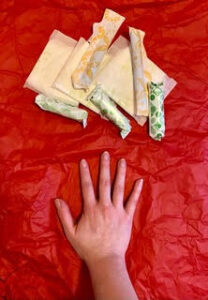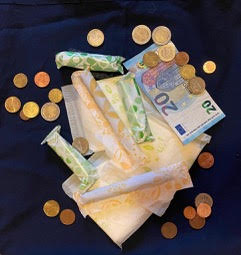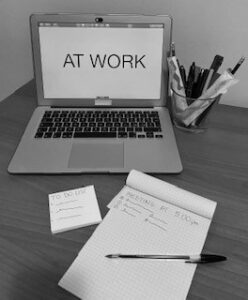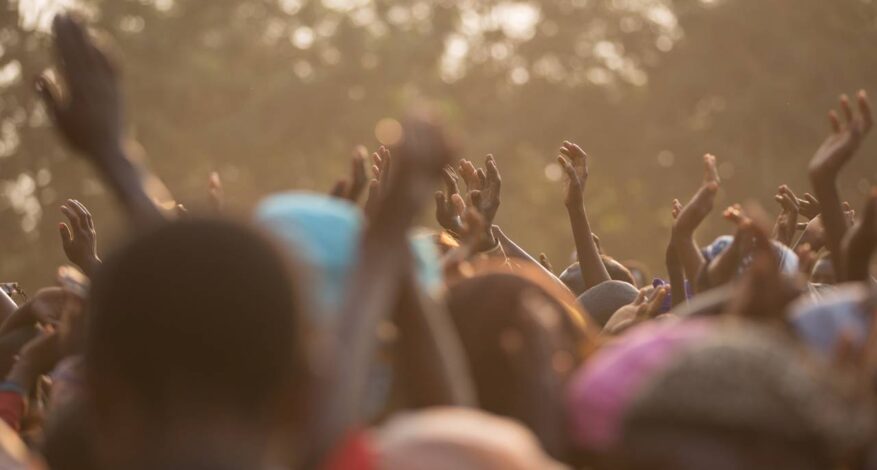HALF THE POPULATION IS BLEEDING
What is period poverty and who does it affect?
All around the world, people who menstruate are facing complications. To mention a few, some are not able to afford sanitary products and access proper hygiene practices or are even shamed for having their period. Let’s talk numbers:

- in Kenya, about half of young girls cannot have access to sanitary products;
- a woman, on average, spends up to $6.360 on menstrual products during her lifetime;
- in Africa, 1 in 10 girls misses school either because she cannot access sanitary products, or because there are no adequate bathrooms in the schools;
- in Europe, while there are countries like Ireland where period products are tax-free or Scotland, where they are provided for free, the average tax on period products goes from 3 to as high as 27 percent.
Period shame and misinformation in developing countries …
 In some parts of Nepal, women must deal with Chhaupadi. Due to this ancient tradition, women during their period are considered impure and are excluded from daily activities by being banished to what is called menstrual huts. They are isolated from the rest of the society as, otherwise, they would bring misfortune. This belief leads to an extremely dangerous situation because women are not provided with sanitary products. Therefore, many of them suffer from psychological harm and have no other choice but use rags instead of sanitary products, putting at risk their hygiene conditions. The situation is similar in India too, where periods are still a huge taboo: 71 percent of young girls have no access to period education and find out about it only when they get it for the first time. Having no information about the topic, many of them experience unease and frustration. They are also forced to isolate themselves from their families during daily activities such as praying and dining. Moreover, menstrual products are overly expensive. Millions of people in India live with less than $1.90 per day, so many women are not able to afford them. Hygiene is a crucial issue: girls use rags instead of sanitary products. As most of them do not have a toilet in their homes, it is difficult for them to manage their hygiene.
In some parts of Nepal, women must deal with Chhaupadi. Due to this ancient tradition, women during their period are considered impure and are excluded from daily activities by being banished to what is called menstrual huts. They are isolated from the rest of the society as, otherwise, they would bring misfortune. This belief leads to an extremely dangerous situation because women are not provided with sanitary products. Therefore, many of them suffer from psychological harm and have no other choice but use rags instead of sanitary products, putting at risk their hygiene conditions. The situation is similar in India too, where periods are still a huge taboo: 71 percent of young girls have no access to period education and find out about it only when they get it for the first time. Having no information about the topic, many of them experience unease and frustration. They are also forced to isolate themselves from their families during daily activities such as praying and dining. Moreover, menstrual products are overly expensive. Millions of people in India live with less than $1.90 per day, so many women are not able to afford them. Hygiene is a crucial issue: girls use rags instead of sanitary products. As most of them do not have a toilet in their homes, it is difficult for them to manage their hygiene.
… but also, in more developed ones
In those countries considered as more developed, period poverty is not as a marginal phenomenon as one may assume.
In 2019, the Italian government decided to reduce the tax from 22 to 5 percent on organic menstrual pads only.
It surely is a great motivation for people to become more eco-friendly, but those products are still more expensive than other sanitary towels.
According to research conducted by Plan International UK, 3 in 10 girls claimed that, during the lockdown, they found it difficult to afford or access menstrual hygiene products.
 Period poverty is an issue in workplaces.
Period poverty is an issue in workplaces.
It is a fact that many people when they get their period, suffer from mental and physical pain.
A lot of women state that the pain they experience does disrupt their daily lives.
Yet, they tend to not report their situation in their workplace as they fear shame.
The pain is not only physical. 90 percent of women get PMS which stands for premenstrual syndrome: they can have mood swings, changes in appetite, feel tired, irritable, and upset.
When reporting it, they are laughed at and not even allowed to take a day off.
What can we do?
Many charities donate period products to disadvantaged people. One can buy products from brands that give back to charities involved in the fight against period poverty.
The change begins with a positive and inclusive approach to the issue, especially with the world’s most vulnerable. Regardless of their gender, everyone must understand that period is normal, not a synonym for uncleanliness and disgust. People who get it are biologically healthy. When talking about it, one should feel comfortable. Everyone has the right to have easy access to sanitary products, good hygiene conditions, and information. Periods are not a luxury.

